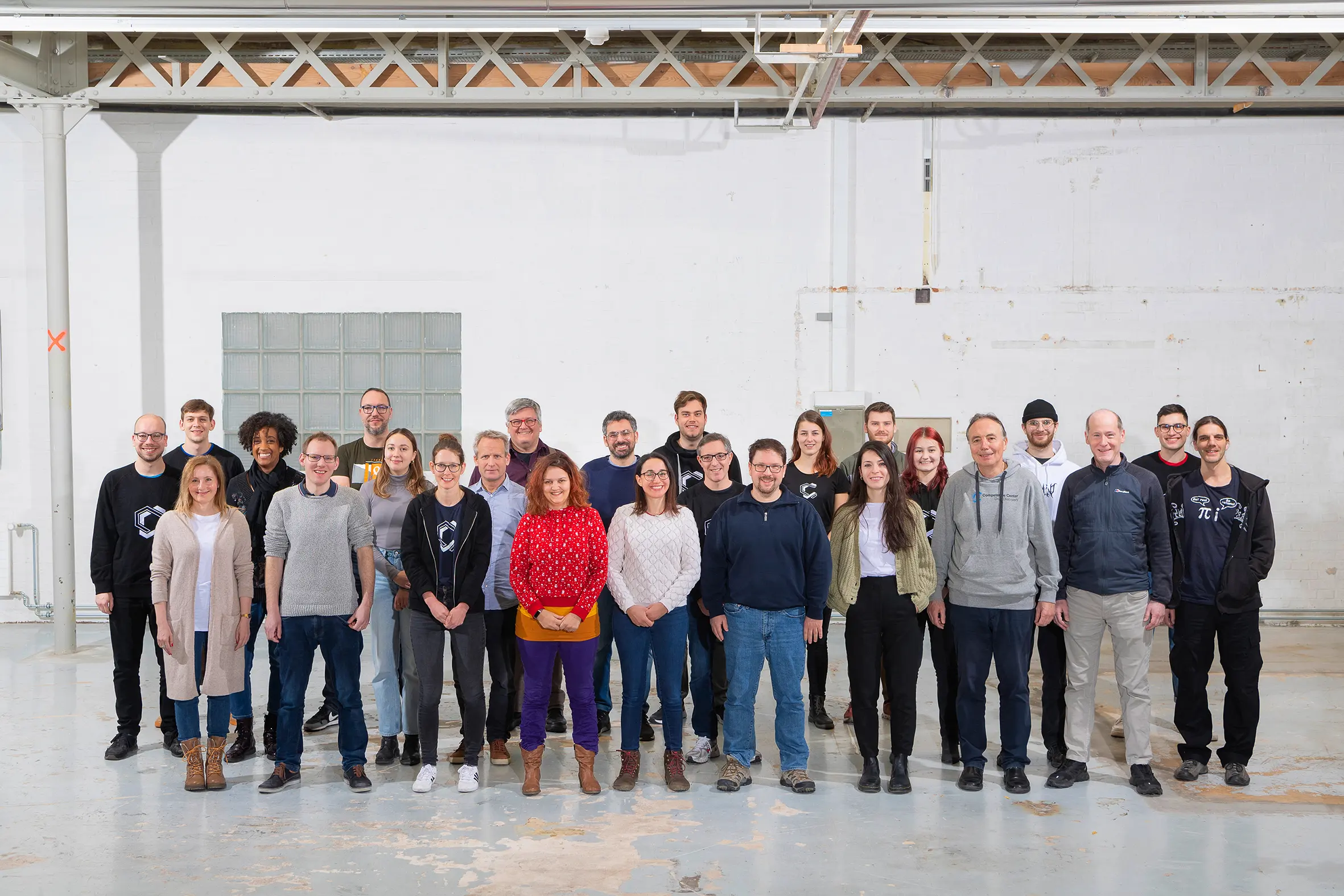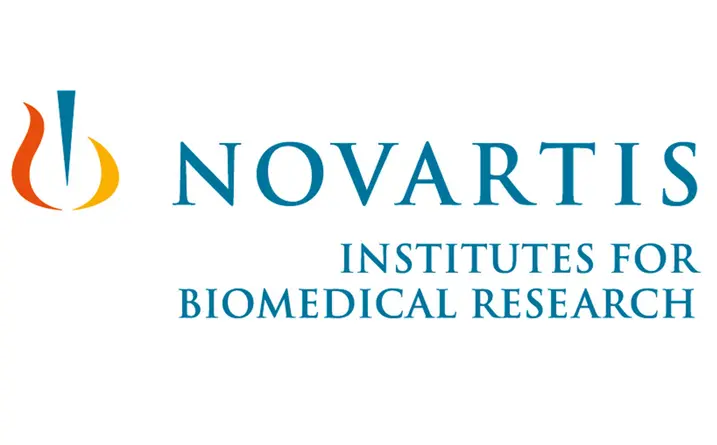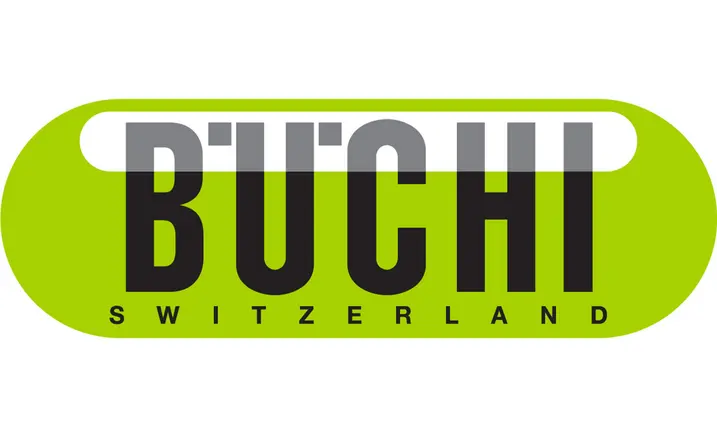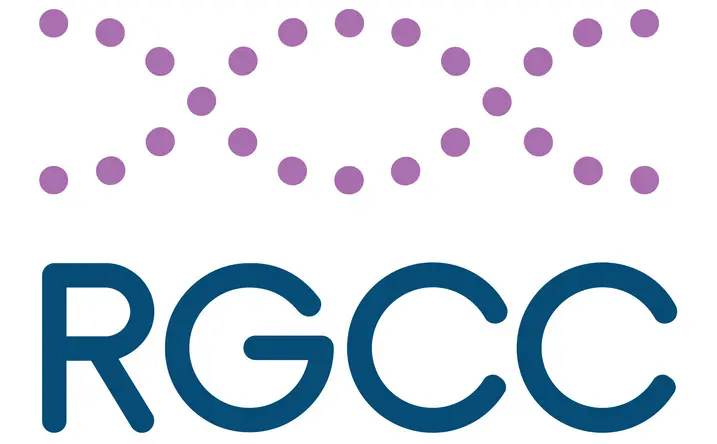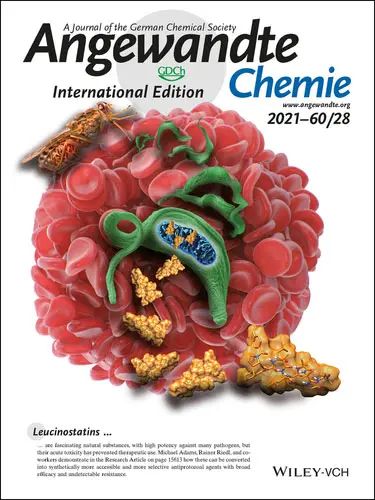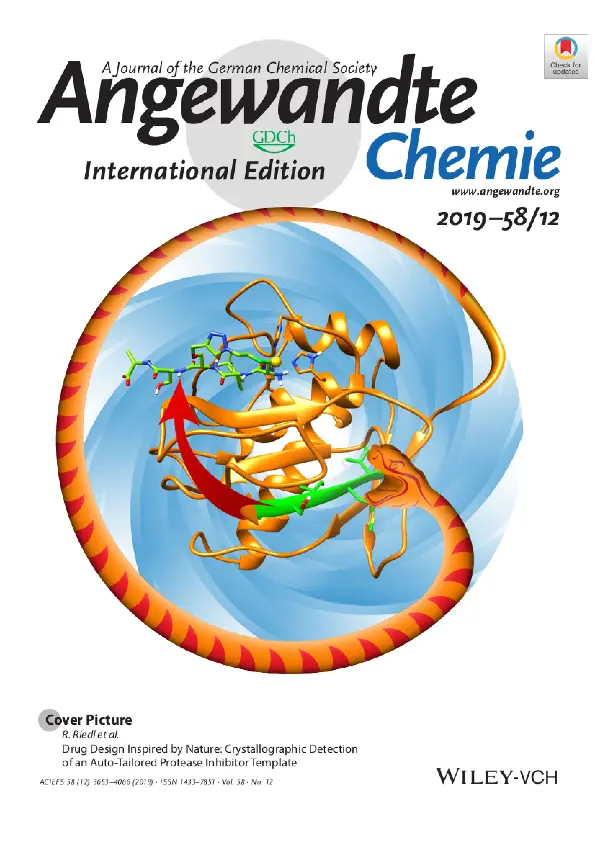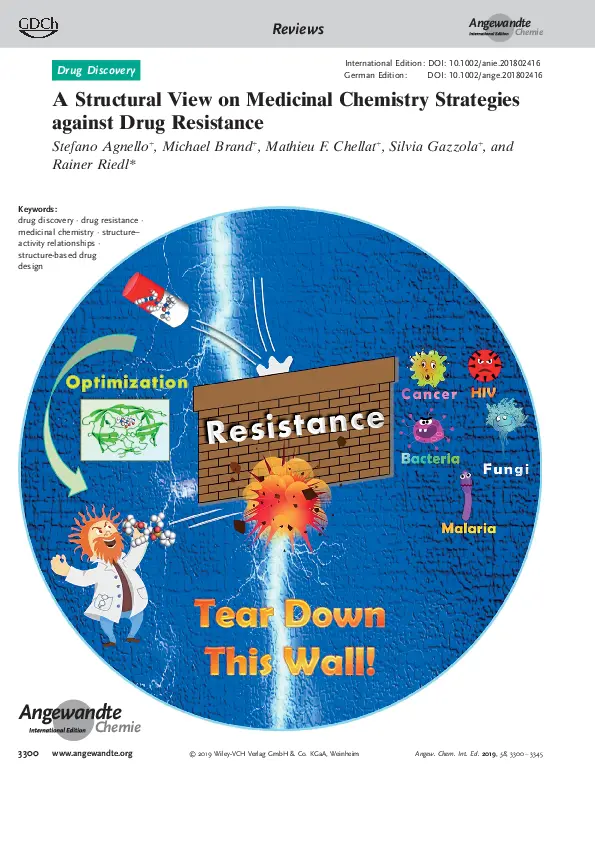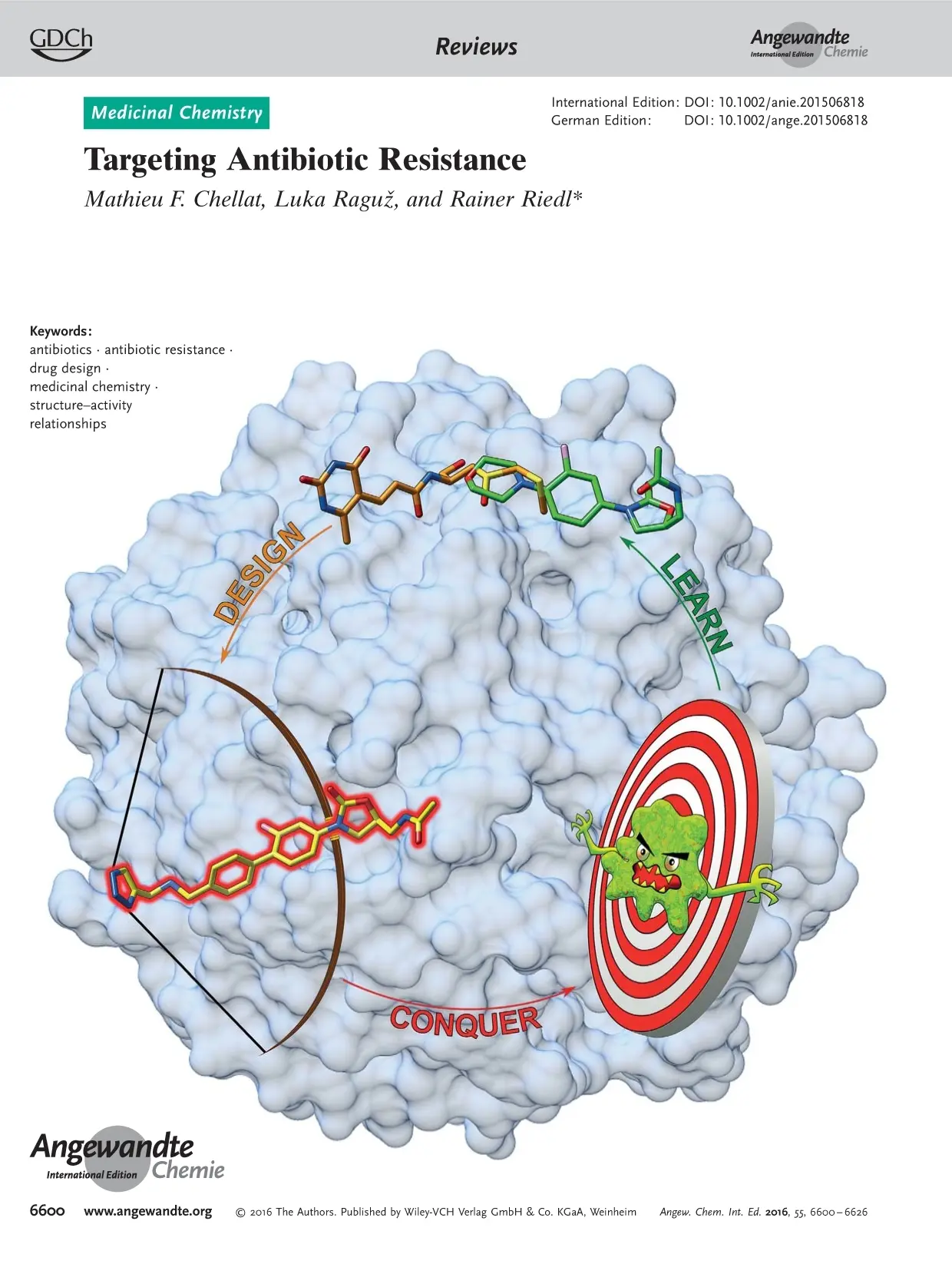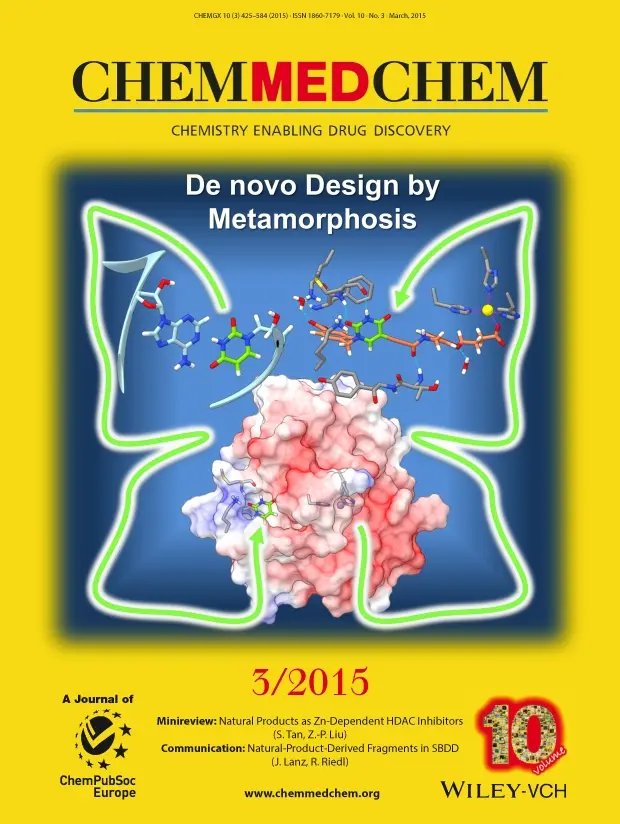Competence Center for Drug Discovery

The Competence Center for Drug Discovery (CC Drug Discovery) is dedicated to the discovery and development of new drugs for innovative therapies against serious diseases.
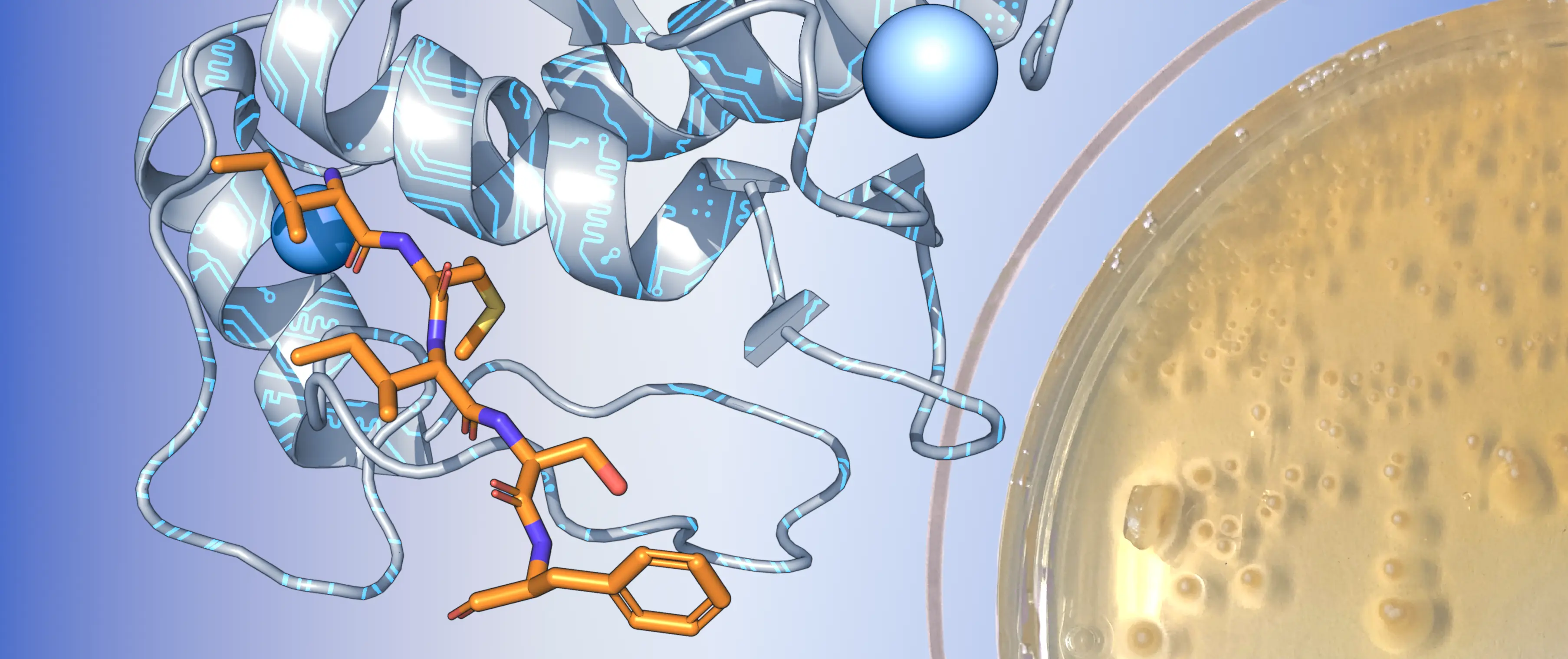
Translational drug discovery
The Competence Center for Drug Discovery at the ZHAW works on a national and international level with partners from industry and academia to develop new clinical drug candidates. Our mission is to address therapeutic issues in an interdisciplinary environment and to promote the synergy of biological, chemical and medical expertise. Our core competence in medicinal chemistry enables us to work with our partners on a range of indications (e.g. cancer, infectious diseases, metabolic diseases) for the benefit of patients.
2nd edition "Competencies in Drug Discovery"
The second edition of our symposium “Competencies in Drug Discovery”, brought together 160 international experts from industry and academia, providing both experienced scientists and young researchers with the opportunity for fruitful exchanges and discussions on the future of drug discovery.

1st edition "Competencies in Drug Discovery"
In June 2022, the first symposium “Competencies in Drug Discovery" took place at the ZHAW Wädenswil. During the symposium, projects from various therapeutic indications were discussed in an interdisciplinary environment to promote the synergy of biological, chemical and medical competencies.
Competencies
We cover the entire chemistry driven value chain of small molecule and peptide drug discovery:
- Medicinal Chemistry
- Organic Chemistry
- Computer aided drug design
- Natural Products
- Parallel and automated organic synthesis
- Microwave assisted organic synthesis
- NMR binding studies of small molecules
- Cheminformatics
- Recombinant protein production in different expression systems
- Protein characterization
- Microbial and cellular test methods
- Culture Collection of Switzerland (www.ccos.ch)
Projects
-
Therapie für den NRAS-Melanom-Subtyp
Das Melanom ist die fünfthäufigste Krebsart in der Schweiz und der tödlichste Hautkrebs. Das NRAS (neuroblastoma ras viral oncogene homolog)-mutierte Melanom ist der aggressivste Subtyp, für den es nach Versagen der Immuntherapie keine wirksame Therapie gibt. Das Ziel dieses Projektes ist es, die…
abgeschlossen, 02/2023 - 07/2024
-
Plattform zur Identifizierung von Wirkstofftargets
Ein grosses Problem bei Projekten der medizinischen Chemie und der Arzneimittelentwicklung ist die unbekannte Identität des molekularen biologischen Ziels, selbst wenn sehr potente Liganden zur Verfügung stehen, wie z. B. solche, die in einem phänotypischen Screening entdeckt wurden. Daher werden…
abgeschlossen, 01/2023 - 12/2023
-
Protease-Inhibitoren gegen SARS-CoV-2
Bisher sind zur Bekämpfung der Covid-19 Pandemie Impfstoffe verfügbar, welche vor einem schweren Verlauf schützen können. Ein Teil der Gesellschaft will sich jedoch nicht impfen lassen oder kann dies aufgrund von Vorerkrankungen nicht. Mit einem Wirkstoff, der das Virus im Organismus bekämpfen kann,…
abgeschlossen, 10/2022 - 03/2024
-
Extrazelluläre Vesikel für den Transport von antimikrobiellen Proteinen zum Zielgewebe
Bakterielle Infektionen gehören auch heute noch zu den weltweit häufigsten Todesursachen und sind eine grosse Herausforderung für unser Gesundheitssystem. Obschon Antibiotika erfolgreich zur Bekämpfung von bakteriellen Infektionen eingesetzt werden, haben bestimmte, pathogene Bakterien Resistenzen…
abgeschlossen, 04/2022 - 10/2023
-
Developing novel and effective therapies for treatment of childhood brain cancers
Brain cancers are a leading cause of mortality in children. Brainstem glioma constitutes 10% of all pediatric central nervous system tumors, the most common type being a high grade diffuse midline glioma (DMG). Preclinical discoveries fail to translate into clinical success due to: i) drug systemic…
abgeschlossen, 03/2022 - 08/2023
-
Entwicklung neuer Therapieansätze zur Behandlung von Krebs
Für die Behandlung von Krebserkrankungen werden dringend weitere Therapieansätze benötigt. Ziel dieses Projektes ist dabei die Synthese von Wirkstoffen, die mit in der Krebstherapie relevanten biologischen Zielproteinen interagieren. Dazu werden mehrstufige organische Synthesen durchgeführt und die…
abgeschlossen, 11/2021 - 05/2023
-
Entwicklung einer neuartigen Behandlung gegen pathologische Haut- und Sehnenkalzifizierung auf Basis eines Gasotransmitters
Es besteht ein ungedeckter medizinischer Bedarf an der Behandlung von pathologischen Kalzifizierungsstörungen, die ein breites Spektrum von Geweben betreffen können. Ziel dieses Projekts ist die Entwicklung einer neuen Klasse von pharmazeutischen Wirkstoffen, die auf der Regulierung eines…
abgeschlossen, 10/2021 - 09/2023
-
Entwicklung von niedermolekularen Verbindungen zur Blockierung des CD93 Signalwegs bei Leukämiepatienten
The aim of the current InnoSuisse application is to optimize small molecules, which were identified in a drug library screen to block CD93-signaling in LSCs and showed a positive clinical response, in order to develop lead candidates with a novel chemical scaffold and own IP to treat leukemia.
abgeschlossen, 01/2021 - 07/2022
-
Inflammasominhibitoren - Entwicklung neuer Hemmstoffe
Die Hemmung des Inflammasoms, ein hochmolekularer Komplex, ist eine vielversprechende Strategie zur Bekämpfung bestimmter Krankheiten mit einer (Auto-)Immunkomponente, darunter Gicht, Arthritis, Alzheimer und Parkinson.
abgeschlossen, 06/2020 - 04/2022
-
Behandlung von Brandwunden
In diesem Projekt werden Hemmstoffe für Matrix-Metalloproteinase 9 (MMP-9) untersucht, um Brandwunden zu behandeln. Dabei wird ein spezielles Molekül untersucht, das die Produktion und Aktivität von MMP-9 in bestimmten Zellen verringert.
abgeschlossen, 04/2020 - 09/2021
-
Induktion der Wirkstoffbildung bei Actinomyceten
Actinomyceten sind eine vielversprechende Quelle für die Gewinnung bioaktiver Substanzen und rücken für die Bekämpfung multiresistenter Bakterien zunehmend in den Fokus. Die ZHAW-Stammsammlung umfasst mehr als 3000 Stämme von Streptomyceten und seltenen Actinomyceten.
abgeschlossen, 08/2019 - 01/2021
-
Ein topisches Antiinfektiva
ZHAWOC6027 ist ein neuer Wirkstoff gegen Hautinfektionen. Um ihn erfolgreich zu nutzen, müssen verschiedene Anforderungen optimiert werden.
abgeschlossen, 05/2019 - 04/2021
-
Morbillivirus cell entry machinery: mechanisms, structures and antiviral drug discovery
Entwicklung neuer antiviraler Wirkstoffe.
abgeschlossen, 04/2019 - 03/2025
-
Novel Antimicrobials for Life-Threatening Infections
Deaths due to antimicrobial resistance are alarmingly high, novel therapies are urgently needed. Here, novel antifungal compounds are developed against life-threatening infections. The compounds will be developed to preclinical proof-of-concept in a collaborative medicinal chemistry program.
abgeschlossen, 04/2018 - 09/2019
-
Virus cell entry machinery: antiviral drug discovery
Development of small molecule inhibitors of the viral cell entry machinery.
abgeschlossen, 04/2018 - 10/2018
-
Dynamic combinatorial chemistry in drug discovery
Das Ziel des Projekts ist die Etablierung einer Technik zur Auffindung neuartiger Wirkstoffmoleküle gegen biologische Zielenzyme durch die Anwendung und Erweiterung von dynamischen kombinatorischen Bibliotheken (DCL).
abgeschlossen, 01/2018 - 12/2018
-
New antileishmanial and antitrypanosomal drugs
The aim is to develop a natural product derived LEAD compound with unrivalled potency against a parasitic disease into a clinical drug candidate, through preclinical development. This includes the establishment of a detailed structure-activity relationship (SAR), medicinal chemistry and organic…
abgeschlossen, 09/2016 - 01/2019
-
New drugs for the treatment of protozoal infections derived from natural products
Development of natural product derived drug for the treatment of protozoal infections, and optimisation of its active principle.
abgeschlossen, 08/2015 - 07/2016
-
Development of high temperature resistant, synergistic biocidal products for protection of PVC against microbial infestation for commercial…
Biocides continue to play an important role in protecting plastics from damage by micro-organisms. These properties are essential in terms to the products use in commercial applications.
abgeschlossen, 07/2014 - 06/2016
-
HIT to LEAD to Preclinical Candidate development of a Transcription Repressor Inhibitory Compound (TRIC) that increases antibiotic…
A new and highly innovative treatment will be realized by a novel and patentable small molecule combinatorial drug candidate for the treatment of antibiotic resistance in multi-resistant, pathogenic staphylococci. The consortium integrates a screening platform, biophysical characterization of small…
abgeschlossen, 09/2013 - 08/2015
Selected publications
- Antiprotozoal Structure–Activity Relationships of Synthetic Leucinostatin Derivatives and Elucidation of their Mode of Action / M. Brand, L. Wang, S. Agnello, S. Gazzola, F. M. Gall, L. Raguž, M. Kaiser, R. S. Schmidt, A. Ritschl, J. Jelk, A. Hemphill, P. Mäser, P. Bütikofer, M. Adams, R. Riedl, Angew. Chem. Int. Ed. 2021, 60, 15613.
- Drug Design Inspired by Nature: Crystallographic Detection of an Auto‐Tailored Protease Inhibitor Template / F. M. Gall, D. Hohl, D. Frasson, T. Wermelinger, P. R. E. Mittl, M. Sievers, R. Riedl, Angew. Chem. Int. Ed. 2019, 58, 4051.
- A Structural View on Medicinal Chemistry Strategies against Drug Resistance / S. Agnello, M. Brand, M. F. Chellat, S. Gazzola, R. Riedl, Angew. Chem. Int. Ed. 2019, 58, 3300.
- Pseudouridimycin: The First Nucleoside Analogue That Selectively Inhibits Bacterial RNA Polymerase / M. F. Chellat, R. Riedl, Angew. Chem. Int. Ed. 2017, 56, 13184.
- Targeting Antibiotic Resistance / Chellat, Mathieu; Raguž, Luka; Riedl, Rainer - Angew. Chem. Int. Ed. 2016, 55, 6600-6626; Angew.Chem. 2016, 128, 6710–6738.
- Molecular recognition of the catalytic zinc (II) ion in MMP-13: Structure-based evolution of an allosteric inhibitor to dual binding mode inhibitors with improved lipophilic ligand efficiencies / Fischer, Thomas; Riedl, Rainer - invited article for the Special Issue "Enzyme-Inhibitor Interaction as Examples of Molecular Recognition" Int. J. Mol. Sci. 2016, 17, 314. Front cover story 3/2016.
- Merging Allosteric and Active Site Binding Motifs: De novo Generation of Target Selectivity and Potency via Natural-Product-Derived Fragments / Lanz, Jan; Riedl, Rainer - ChemMedChem. 2015, 10, 451–454. Front cover story 3/2015.
Complete List of Publications
-
Rimle, Lukas; Pliatsika, Dimanthi; Arnold, Noëlle; Kurth, Sandra; Kaiser, Marcel; Mäser, Pascal; Kemmler, Michael; Adams, Michael; Riedl, Rainer; von Ballmoos, Christoph,
2025.
Journal of Medicinal Chemistry.
68(4), S. 4237-4258.
Verfügbar unter: https://doi.org/10.1021/acs.jmedchem.4c01989
-
Fischer, Thomas; Frasson, David; Sievers, Martin; Riedl, Rainer,
2024.
Phthalimide derivatives as a new class of papain-like protease inhibitors in SARS-CoV-2.
Archiv der Pharmazie.
358(1), S. e2400714.
Verfügbar unter: https://doi.org/10.1002/ardp.202400714
-
Pliatsika, Dimanthi; Blatter, Cindy; Riedl, Rainer,
2024.
Targeted protein degradation : current molecular targets, localization, and strategies.
Drug Discovery Today.
29(11), S. 104178.
Verfügbar unter: https://doi.org/10.1016/j.drudis.2024.104178
-
2024.
Competencies in drug discovery.
In:
tfz Innovation Inside Pharma, Rotkreuz, Switzerland, 23 October 2024.
Team
